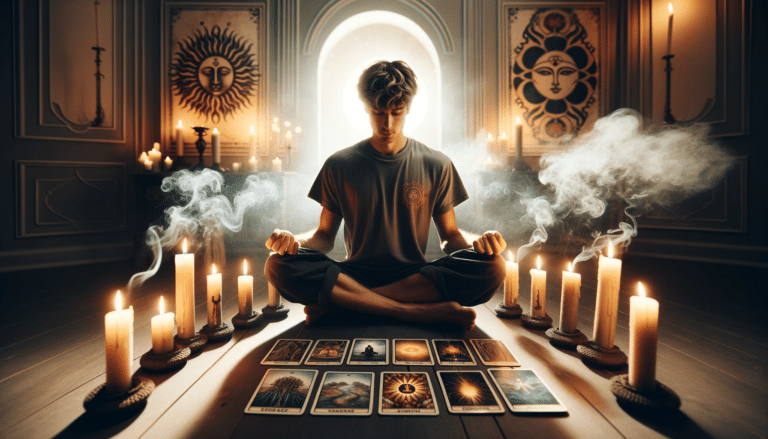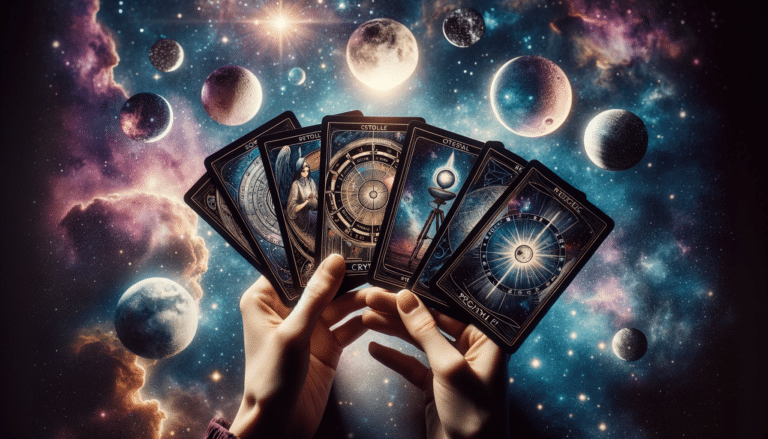11 Key Tarot Card Meanings And Correspondences
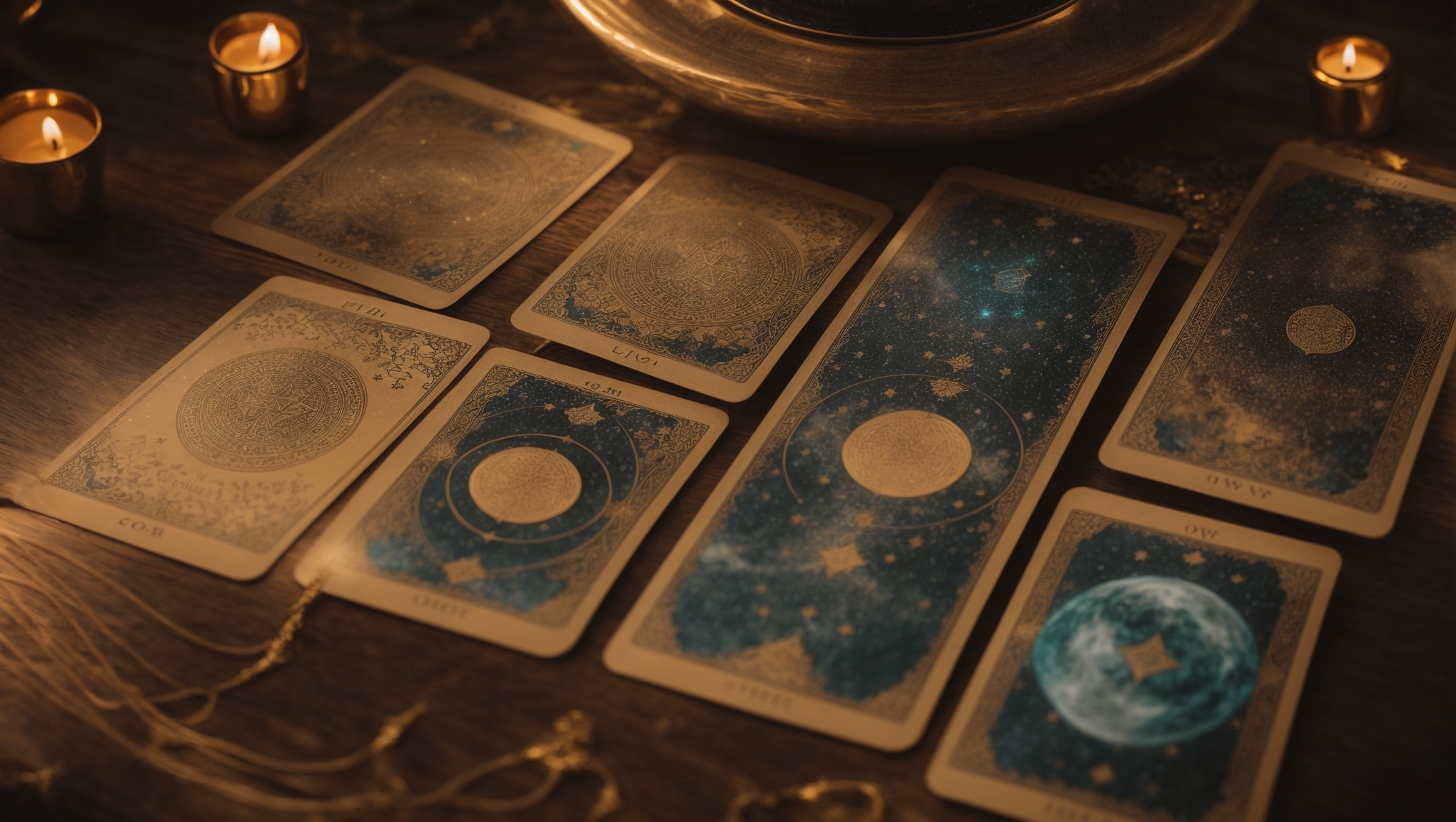
Did you know 3 million Americans read their tarot cards yearly?
Whether you’re new or a seasoned reader, you’re in the right place.
We’ve stripped back the mystery to reveal 11 key tarot card meanings and correspondences. We’ll decode the symbolism and help you understand the profound messages each card holds.
So, don’t be intimidated, let’s delve deeper into the world of tarot together. Get ready to unlock the secrets of your deck.
Key Takeaways
- Major Arcana and Minor Arcana are important parts of the tarot deck, each with their own significance and interpretations.
- Intuition and symbolism play a crucial role in understanding and connecting with the tarot cards.
- The World card signifies strength, achievement, and moving forward towards new opportunities and experiences.
- Tarot cards offer deeper insights and revelations beyond their individual meanings, and should be seen as part of a larger journey and exploration.
Understanding the Major Arcana

The Major Arcana, a crucial component of the tarot deck, is what you’ll tackle next in your journey to understand the intricate world of tarot cards. These cards are the heart of the tarot, containing 22 cards that each represent a significant stage in the journey of life. They’re not just random symbols; they tell a story.
Think of the Major Arcana as a book, with you being the main character. From the Fool, which symbolizes the beginning of the journey, to the World, which signifies fulfillment and completion, each card plays its part in the narrative. They’re the milestones, the significant events that shape you.
Interpreting these cards isn’t as daunting as it sounds. Each card carries its own meaning, yes, but it’s the context that truly brings it to life. The Death card, for example, doesn’t necessarily mean physical death. It could symbolize the end of a phase, a transformation. So, engage with the cards, let them speak to you. Remember, it’s your story they’re telling.
Check out our Tarot Cards here…
Interpreting the Minor Arcana
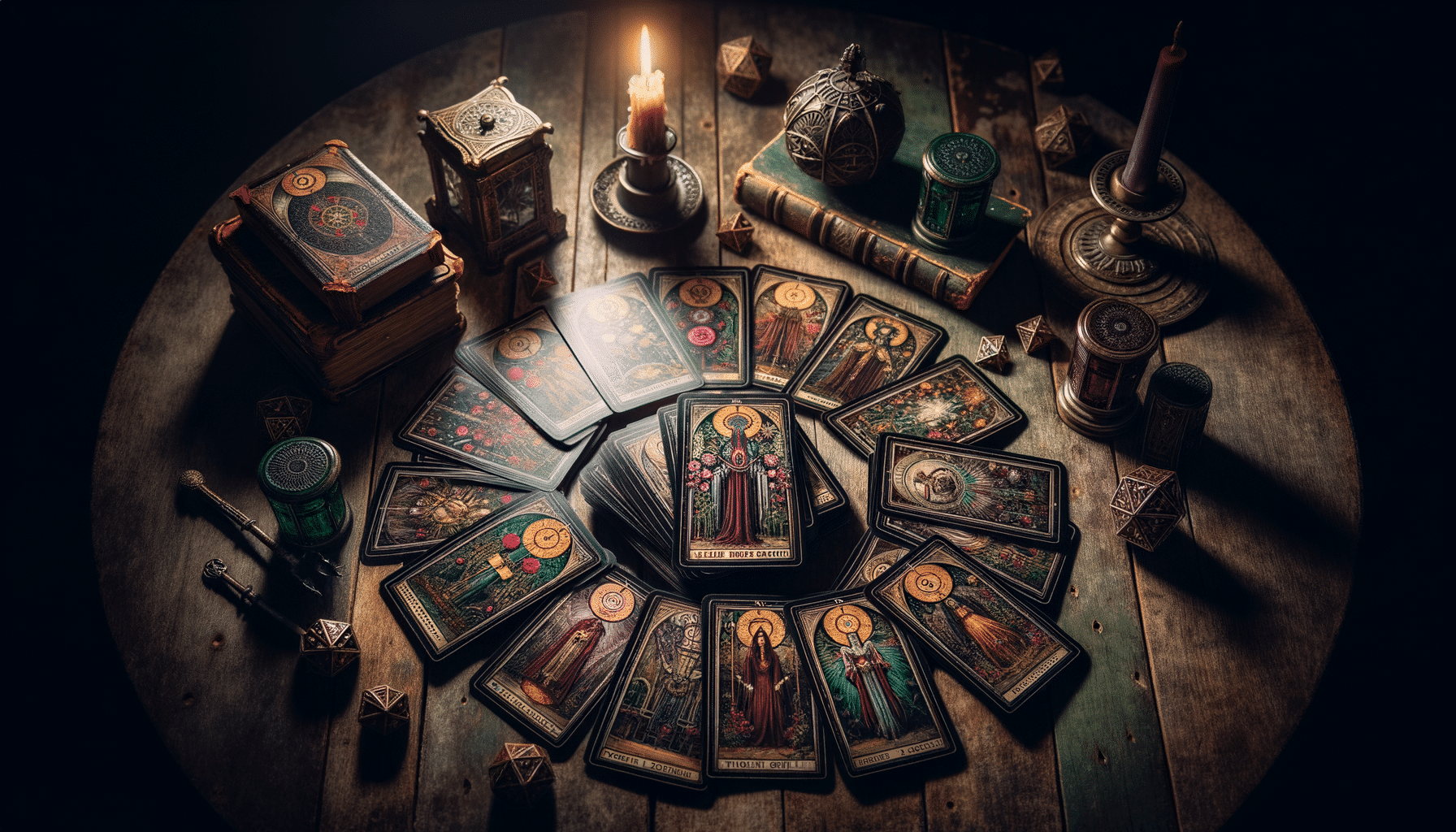
Now let’s shift our focus to the Minor Arcana.
You’ll find understanding symbols within these cards crucial to your interpretations.
We’ll also examine how to effectively read each of these cards to improve your tarot reading skills.
Understanding Minor Arcana Symbols
Diving into the realm of Minor Arcana, you’ll discover a rich tapestry of symbols that can shed light on various aspects of your daily life. Each card, from the Ace to the Ten and the four court cards, represents different situations, emotions, and experiences.
The suits of the Minor Arcana – Cups, Pentacles, Swords, and Wands – are linked to elements of water, earth, air, and fire respectively. Cups often relate to emotions and relationships, Pentacles to material aspects, Swords to challenges and intellect, and Wands to energy and creativity. The numbers and court cards also have their unique symbolism.
Understanding these symbols isn’t just about memorizing meanings. It’s about connecting with the cards intuitively, taking into account their imagery, colors, and the feelings they evoke.
Reading Minor Arcana Cards
In understanding the Minor Arcana, you’ll find four suits with 14 cards each, all brimming with deep symbolism that you’ll need to interpret carefully. This interpretation is an art form that demands your full attention. Here are three key points to remember:
-
Suits: Each suit (Cups, Wands, Pentacles, Swords) represents a unique aspect of life. Understand the essence of these suits to decipher the card’s context.
-
Numerology: Each card number has a distinct meaning. Combining this with the suit’s meaning gives a more precise interpretation.
-
Imagery: The artwork on the card is rich in symbolism. Pay attention to every detail as it can provide insights into the situation at hand.
Next, we’ll delve into the significance of the Fool card, a powerful symbol in the Tarot deck.
Learn about more Tarot Basics here…
The Significance of the Fool Card

You’ll find that the Fool card, first in the 78-card Tarot deck, signifies new beginnings, spontaneity, and a need for faith in one’s journey. It embodies the spirit of adventure and the unknown. When you draw this card, it’s an invitation to step into the unknown with a sense of curiosity and wonder.
The Fool card doesn’t just represent literal journeys. It can also symbolize a mental or spiritual journey. You may be at a crossroads, ready to make a life-altering decision. The Fool encourages you to trust your instincts, take that leap of faith, and embrace the uncertainty that comes with new experiences.
However, the Fool also serves as a warning against naivety and reckless actions. It urges you to look before you leap and weigh your options wisely. Remember, every adventure has its risks, but it’s up to you to navigate them responsibly.
In Tarot readings, the Fool is a positive card, suggesting an exciting new phase of life. But remember, the Fool’s journey is only the beginning. As we transition to the next card in the deck, we’ll explore the Emperor card’s dominant meanings.
Learn even more secrets of Tarot Card Interpretation here…
The Emperor Card’s Dominant Meanings

Continuing your tarot journey, the Emperor card, fourth in the deck, stands for authority, structure, and control in your life. This card signals the presence of discipline and rationality. It’s a reminder of the importance of stability and consistency in achieving your goals.
The Emperor card has three key meanings:
- Authority: This card represents the power and control you have or need in your life. It encourages you to take charge and assert your dominance. Don’t be afraid to lay down the law when necessary.
- Structure: The Emperor is all about organization. It symbolizes the need for a solid foundation and a clear plan. It’s a call to consider the systems and structures you have in place, and how they’re helping or hindering your progress.
- Stability: This card signifies the importance of balance and consistency. It’s a sign that you need to create a steady and reliable environment in order to thrive.
In essence, when the Emperor card comes up in a reading, it’s a call to harness your inner authority, establish structure, and seek stability. It’s about taking control and creating a firm foundation for your future.
The Hidden Messages of the Lovers Card
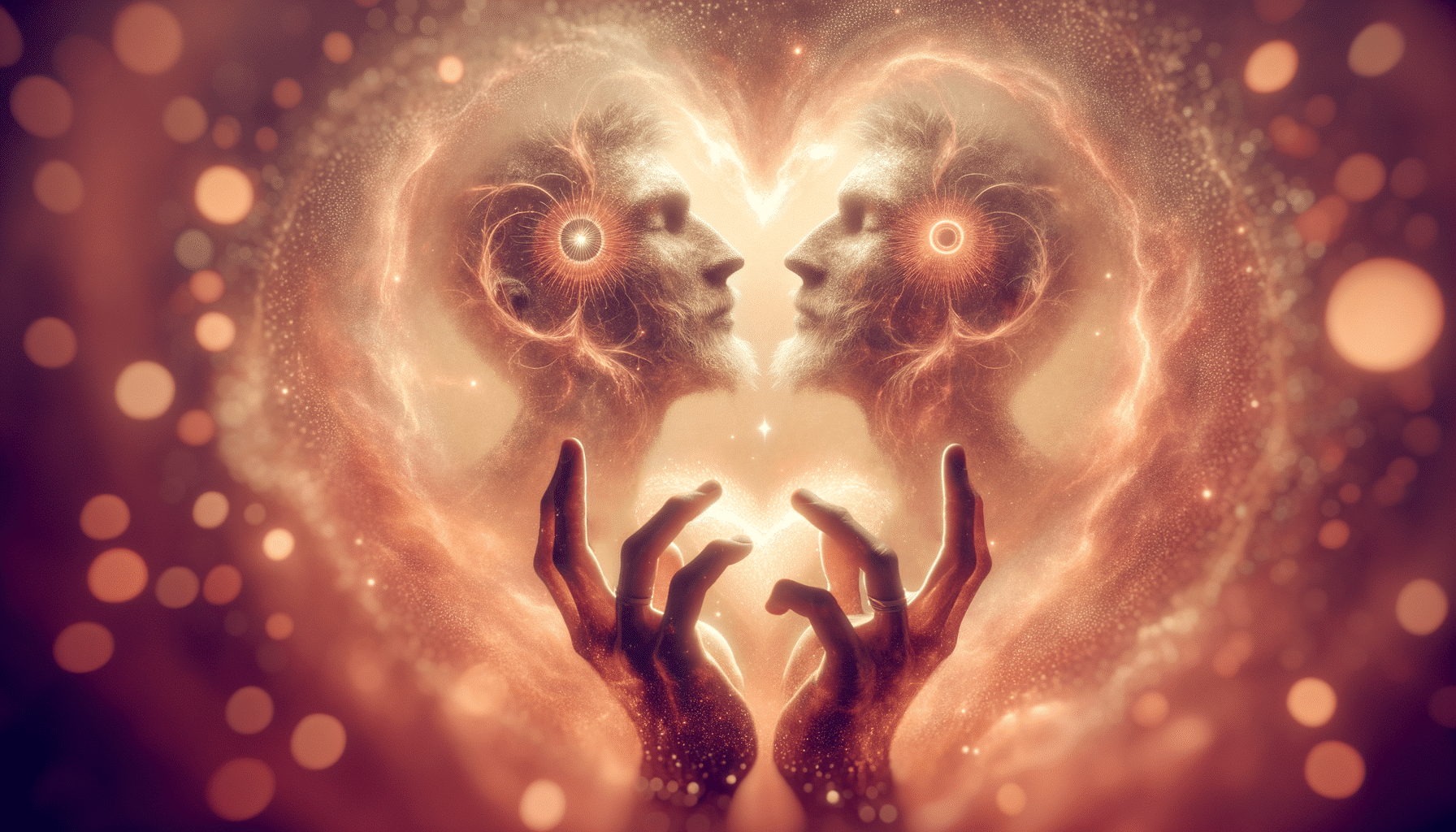
Moving on from the stability-inducing Emperor, let’s delve into the nuanced messages hidden within the Lovers card. At first glance, you might think this card is all about romantic love. However, it’s more profound than that. It symbolizes harmony, partnership, and decisions.
This card often appears when you’re at a crossroads, suggesting the need to make a choice. The Lovers card challenges you to weigh your options carefully. The choices you make could have long-lasting impacts, so it’s essential you think things through.
The Lovers card also speaks to the harmony within relationships, not just romantic ones. It could be pointing towards a need for balance in your friendships, family ties, or even within yourself. The message here is about aligning your actions with your values and personal beliefs.
Lastly, this card can indicate a deep, spiritual love. It could be a call to reconnect with your higher self, to seek spiritual guidance, or to engage in self-love. Remember, the Lovers card isn’t just about external relationships; it’s about the relationship you have with yourself too.
The Hermit Card: Symbolism and Significance

After exploring the nuanced meanings of the Lovers card, you’re now ready to delve into the symbolism and significance of the Hermit card. The Hermit, card number nine in the Tarot deck, is a mysterious figure that embodies introspection, wisdom, and self-discovery.
There are three key symbols linked to the Hermit card:
-
The Lantern: This light source signifies your inner guidance, the wisdom that illuminates your path when you embark on a journey of self-reflection and introspection.
-
The Staff: This symbolizes the Hermit’s power and authority over his own life. It’s a reminder that you have the power to choose your path and direct your life’s course.
-
The Mountain: Mountains are often associated with challenges and spiritual ascension. They represent the Hermit’s solitude and isolation necessary for deep introspection.
The Hermit card encourages you to withdraw from the external world and tune in to your inner self. It’s a call to slow down, reflect, and seek wisdom within. Remember, this card isn’t about loneliness, but rather, about solitary introspection leading to clarity and enlightenment.
The Wheel of Fortune Card’s Predictive Power

Now, let’s turn your attention to the predictive power of the Wheel of Fortune card, a symbol of life’s unpredictable cycles and changes. When you pull this card, it’s a sign that a significant shift is approaching. This isn’t something to fear, but rather an opportunity for growth and evolution.
The Wheel of Fortune card is all about change, cycles, and the unexpected. It’s about the ups and downs we all face in life. So, when this card shows up in your reading, you’re being warned to brace for change, to expect the unexpected. But it’s not just about the bad times; it’s about the good times too. The Wheel of Fortune card reminds us that everything is cyclical – what goes up must come down and vice versa.
In terms of predictive power, this card can signal an upcoming stroke of luck or a sudden, surprising twist. Remember, though, the Wheel of Fortune doesn’t necessarily predict whether these changes will be positive or negative. It simply indicates that change is coming. So, whether it’s a new job, relationship, or life phase, get ready to embrace the unexpected! It’s all part of life’s fascinating journey.
Unveiling the Death Card’s True Meaning
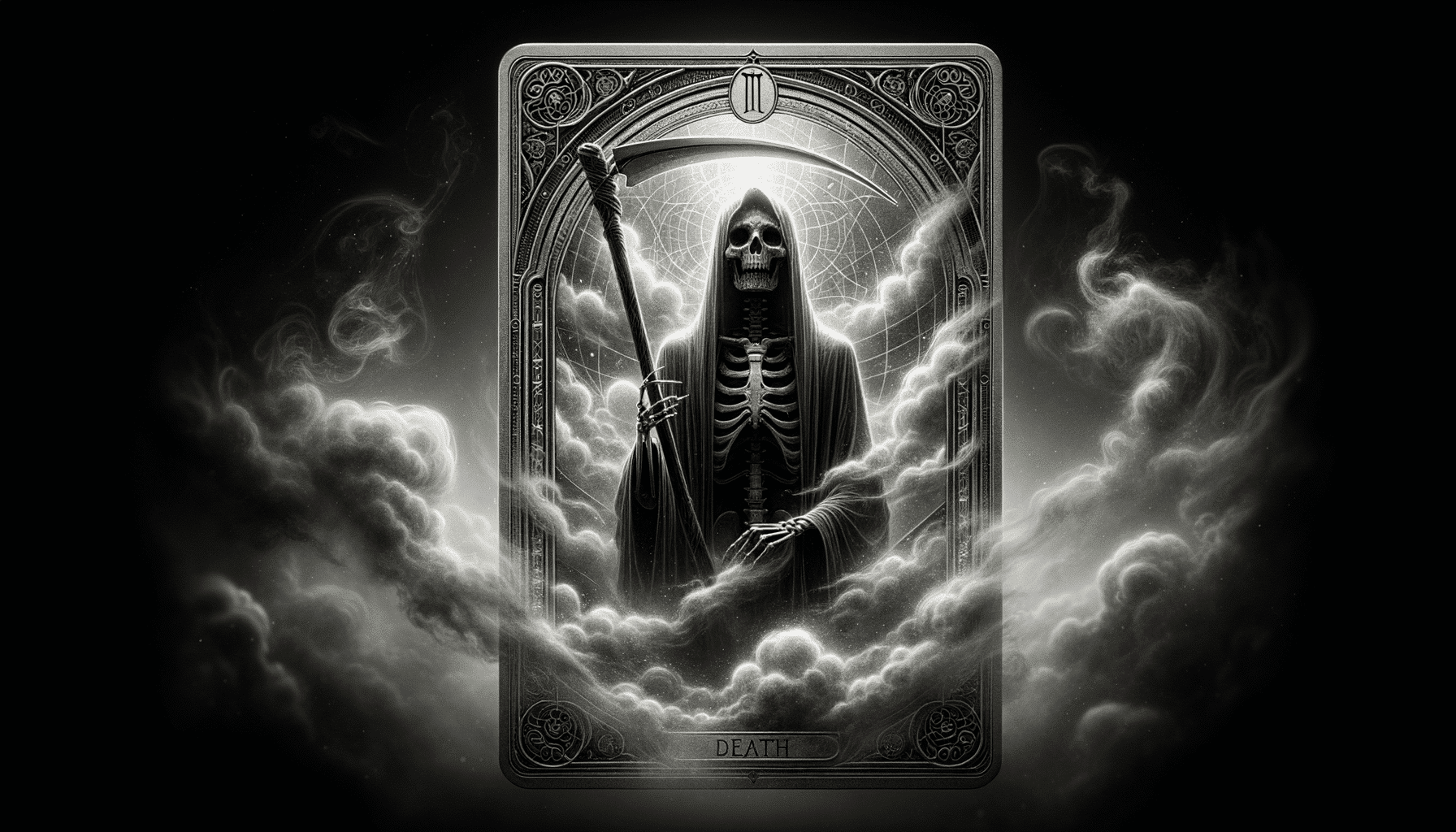
Despite its ominous reputation, the Death card often signifies a metaphorical end, not a literal one, inviting you to embrace significant transformation and change in your life. It’s not a card of doom, but a wake-up call, urging you to let go of stagnation and move forward.
To further understand the Death card, let’s delve into three key aspects:
-
Change: Death symbolizes the termination of a cycle, thus heralding a new phase. It’s encouragement for you to shed what’s obsolete, making room for new beginnings.
-
Transformation: This card represents a transformative process, akin to a caterpillar becoming a butterfly. It’s a call to evolve and adapt, embracing the changes that come your way.
-
Resurrection: The Death card also echoes themes of resurrection. Just as death isn’t the end but a transition, this card invites you to rise from your metaphorical ashes, renewed and revitalized.
So, don’t fear the Death card. It’s a harbinger of change, transformation, and rebirth. Embrace these shifts and watch your life bloom anew.
Now, let’s transition to the subsequent section, ‘the devil card’s misunderstood representations’.
The Devil Card’s Misunderstood Representations
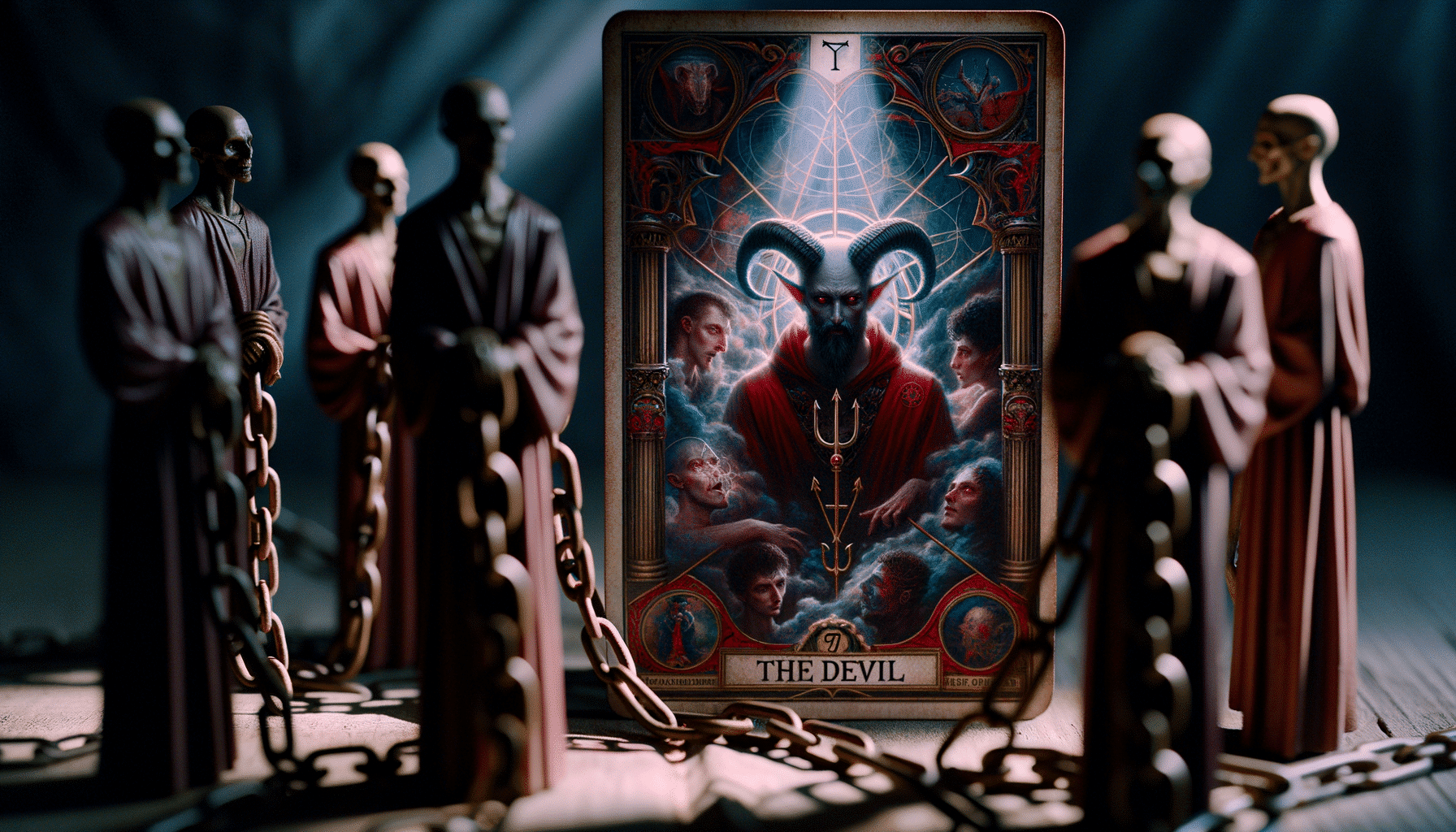
You might see the Devil card and immediately think of evil or negativity. It’s a common misconception, but there’s more to this card than meets the eye.
Let’s explore its hidden symbolism and challenge those negative connotations you’ve been holding onto.
Devil Card’s Negative Connotations
While many may fear the Devil card due to its negative connotations, it’s important to understand its misunderstood representations in Tarot.
The Devil card doesn’t actually suggest evil or misfortune, but rather symbolizes situations and patterns that keep us stuck.
-
Materialism: The Devil card often indicates an unhealthy attachment to material things, which can cause you to feel trapped.
-
Addiction: It can represent addiction or harmful patterns that you’re finding difficult to break free from.
-
Negativity: This card can also signify persisting in negative attitudes or behaviors, despite knowing their harmful effects.
Unveiling Hidden Devil Symbolism
So, how does the Devil card’s symbolism go beyond its initial negative impressions? It’s not only about temptation and addiction, but also a representation of the shadow self. This card encourages you to confront your darkest fears and hidden desires. It’s a call to acknowledge and understand your inner demons, not to run away from them.
You’re urged to break free from self-imposed chains, symbolized by the chained figures in the card. The Devil card doesn’t want you to remain a slave to your fears or desires. Instead, it wants you to gain power over them, leading to personal growth and liberation.
The Star Card as a Beacon of Hope

In the realm of Tarot, the Star card often serves as a beacon of hope, guiding you through life’s challenges with its illuminating energy. This card, often associated with the astrological sign Aquarius, encourages you to keep faith even in times of despair and uncertainty. Its appearance in a reading can indicate a period of renewal, growth, and inspiration.
Let’s delve into the key aspects that make this card a symbol of optimism:
-
Guidance: The Star card represents your inner compass, leading you towards your goals and dreams. It’s a reminder to trust your intuition and keep moving forward.
-
Healing: This card signifies recovery and rejuvenation. It’s a beacon of light in the darkness, signaling that better days are coming. It’s a symbol of healing, both physical and emotional.
-
Inspiration: The Star card radiates creative energy, urging you to pursue your passions and embrace your unique talents. It’s a call to be authentic and let your true self shine.
In a nutshell, the Star card is a symbol of hope, guiding you with its radiant light, encouraging healing and kindling inspiration within you.
The World Card’s Completion and Fulfillment

Let’s now turn our attention to ‘The World Card’ and its significance in tarot.
This card symbolizes a sense of fulfillment and achievement, marking the end of a cycle and the manifestation of completion energy.
It’s an intricate symbol with a profound interpretation that we’ll unpack together.
World Card: Symbol Interpretation
When you draw the World Card, it signifies a phase of completion and fulfillment in your life. This powerful card is rich with symbols and meanings that can help guide you on your journey.
-
The wreath: Enclosing the central figure, the wreath signifies victory and achievement, a sign of the culmination of your efforts.
-
The four figures: Representing the four elements (earth, air, fire, water), these figures suggest balance and harmony in all areas of life.
-
The dancing figure: In the center, the dancing figure symbolizes joy and freedom, the rewards of your hard work.
These symbols combine to herald a time of fulfillment, a period where you’re reaping the benefits of your past actions.
This leads us to the subsequent section about ‘achievement and fulfillment aspects’.
Achievement and Fulfillment Aspects
As you embrace the World Card’s message, you’ll find yourself facing a profound sense of achievement and fulfillment. This card represents the culmination of a journey, the completion of a cycle. It’s a milestone of sorts, marking your progress and success.
You’ve weathered the challenges, learned from your experiences, and now, you’re reaping the rewards of your hard work and perseverance. The World Card signifies a time of harmony and satisfaction. It’s a moment of realization that you’ve achieved your goals, and a well-deserved moment of celebration.
Embrace this card’s message, it’s a testament to your growth and accomplishment.
Now, let’s transition to understanding how this sense of completion and fulfillment manifests energetically.
Completion Energy Manifestation
In your journey with the World Card, you’ll notice a distinct shift in your energy as you move into a state of completion and fulfillment. This card represents a cycle’s end, a goal reached, and a dream realized. It’s a powerful symbol of wholeness, unity, and attainment.
Now, let’s focus on the three key aspects of this completion energy:
-
Inner Transformation: You’ve grown. You’re not the same person who started this journey. Embrace this change; it’s a testament to your strength and resilience.
-
Achievement: You’ve reached your goal. Celebrate this triumph, but don’t rest on your laurels. There’s always more to learn and new heights to reach.
-
Moving Forward: Completion doesn’t mean stagnation. It’s a springboard to greater opportunities. Use your achievements as stepping stones towards your next adventure.
Embrace the World Card’s energy. Let it guide you towards fulfillment and beyond.
Frequently Asked Questions

What Is the Significance of Reversed Tarot Cards?
When you’re dealing with reversed tarot cards, you’re stepping into complex territory. They’re not just ‘bad’ versions of upright cards, but can signify internal influences, delays, or different perspectives. It’s about deep introspection.
How Can Tarot Cards Be Used in Meditation or Spiritual Practice?
You can weave tarot cards into your spiritual practice by focusing on their imagery during meditation. They’ll spark your intuition, inspire self-reflection, and guide you towards new insights about your personal journey.
Are There Any Cultural or Historical Influences in the Symbolism of Tarot Cards?
Yes, tarot cards are deeply influenced by cultural and historical factors. They’re steeped in symbolism from ancient religions, mythology, and historical events, making their study a rich journey through different periods and cultures.
How Can Tarot Cards Assist in Personal Growth or Self-Discovery?
Tarot cards can guide you in self-discovery by revealing subconscious thoughts and feelings. They’re not magic, but a tool for reflection, helping you understand your inner self and encouraging personal growth.
What Are Some Common Misconceptions About Reading Tarot Cards?
You might think tarot reading predicts exact future events, but it’s more about insight and reflection. It’s not evil or dangerous either. You don’t need psychic abilities, as it’s a tool for self-discovery.
Conclusion
So, you’ve journeyed through the mystical realm of Tarot, from the Major to Minor Arcana, and the Fool to the World card.
Remember, despite its ominous reputation, the Death card simply signifies transformation. Interestingly, a study found 67% of people initially fear this card, yet it’s truly a symbol of change.
Keep this in mind, and let the Star card’s hope guide you in understanding the rich layers of Tarot’s timeless wisdom.
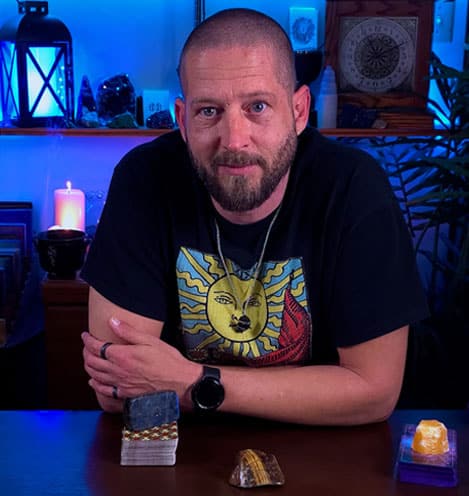
About The Author – Allen Hill
Allen Hill, the force behind Unknown Truth Tarot, has a YouTube following 6-times bigger than the population of his hometown, Miamisburg, Ohio. From his spiritually rich blog on Tarot and crystals to his role as CEO of The Unknown Truth Tarot Metaphysical Shop, Allen’s passion for the metaphysical shines through.
A master Tarot reader and “crystal junkie,” Allen is also a devoted dad to Dylan, 10, and Destiny, 24. When he’s not immersed in the world of Tarot and crystals, he enjoys poker and video gaming sessions, often humorously outplayed by Dylan.
Follow Allen on Twitter, Instagram, Facebook, TikTok, and subscribe to his Unknown Truth Tarot YouTube channel to join him on a journey of spiritual growth and self-discovery.

